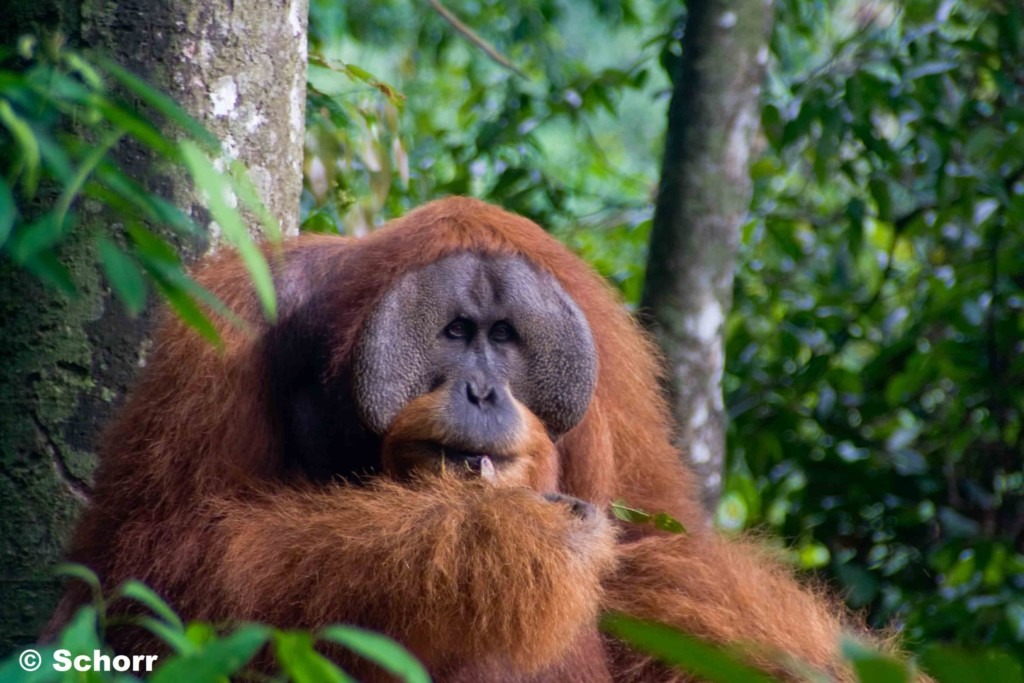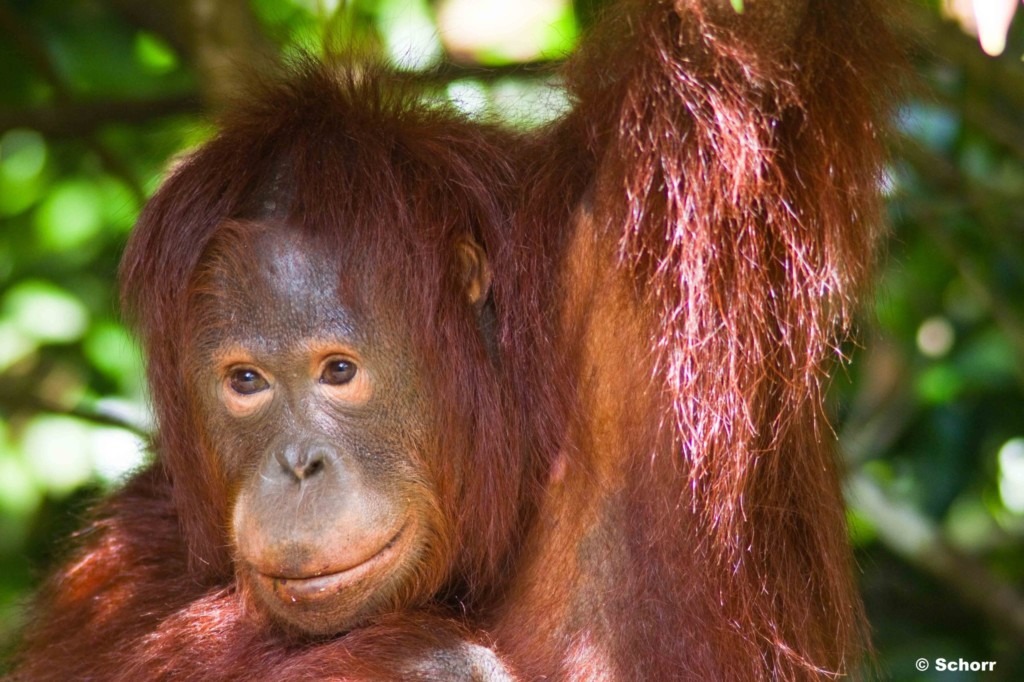Species and appearance
Besides their bright orange fur, their very long arms and relatively short legs – with feet very similar to hands – are distinctive features of their appearance. Fully grown, males can be recognized by their large cheek pads and long fur.
The function of these cheekpads is not yet clear: it has been theorized that they may serve as protection for the face, or as a sound projection aid for long calls, or simply as a visual signal to other adults. They usually grow around the age of 15 to 20 years, at which point orangutan males become fertile.

Species and numbers of orangutans
In Borneo there are about 54,000 orangutans. The majority of these, about 32,000, belong to the subspecies Pongo pygmaeus wurmbii (IUCN, 2003). The Sumatran orangutan is highly endangered. It is estimated that there are around 13,000 remaining.1 The Tapanuli orangutan with only about 800 individuals is close to extinction.2
Scientific studies3 suggest that the strong population decline must have happened recently, because the genetic diversity detected in the Sumatran orangutan is much higher than in the Bornean orangutan.

1) Wich, S. A., Singleton, I., Nowak, M. G., Utami Atmoko, S. S., Nisam, G., Arif, S. M., Putra, H., Ardi, R., Fredriksson, G., Usher, G., Gaveau, D. L. A., & Kühl, H. S. (2016). Land-cover changes predict steep declines for the Sumatran orangutan (Pongo abelii). Science Advances, 2(3): e1500789.
2) Nater et al.: Morphometric, Behavioral, and Genomic Evidence for a New Orangutan Species. Current Biology, Volume 21, Issue 22, 20 November 2017, Pages 3487-3498.


